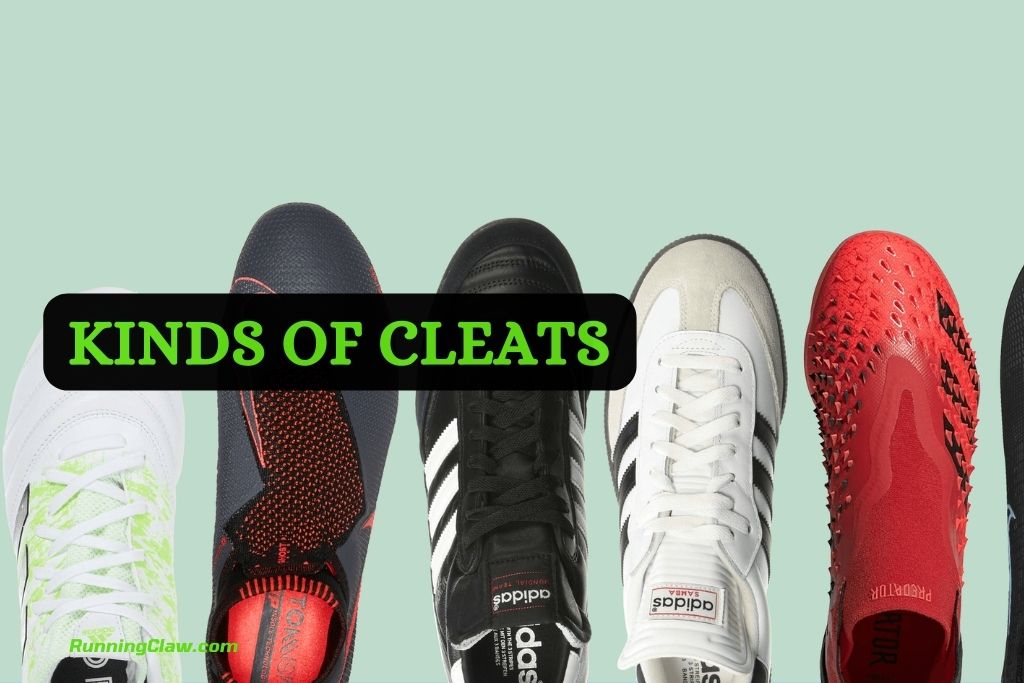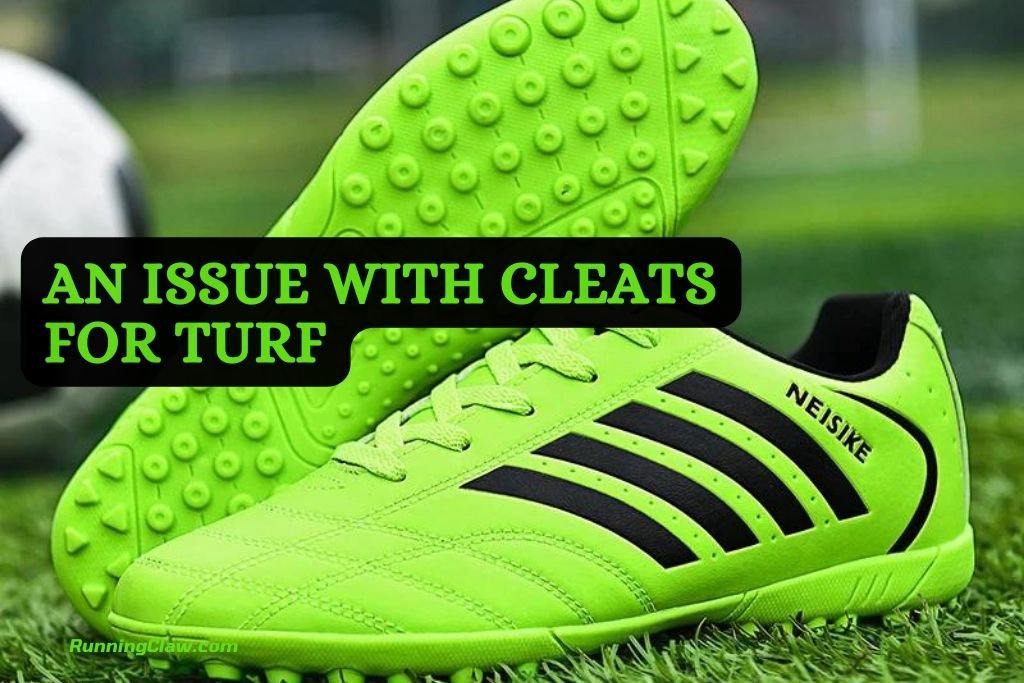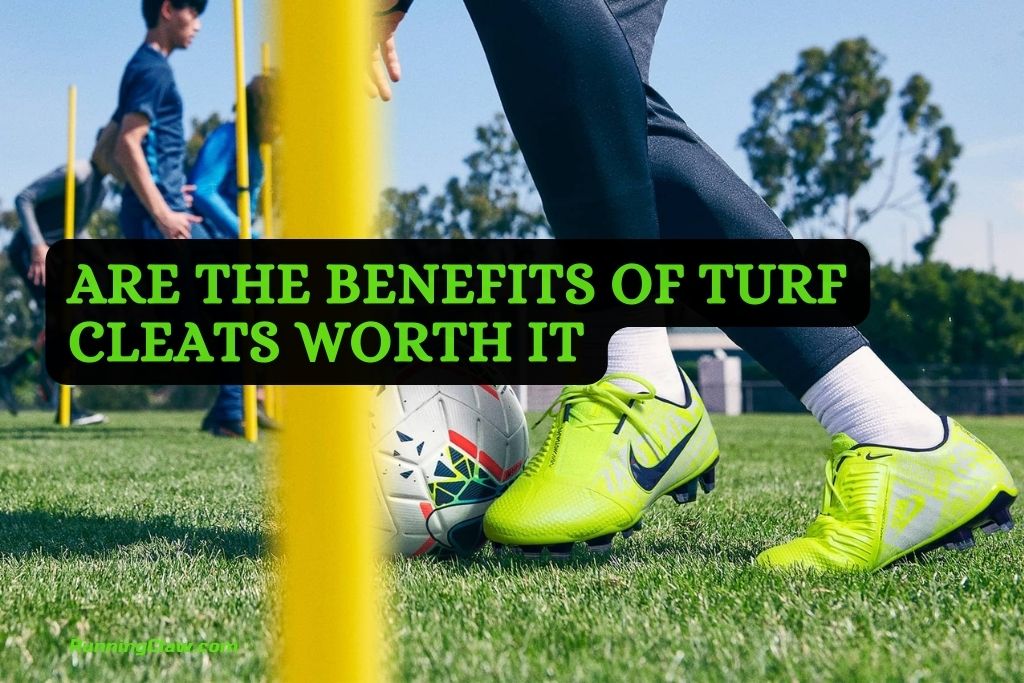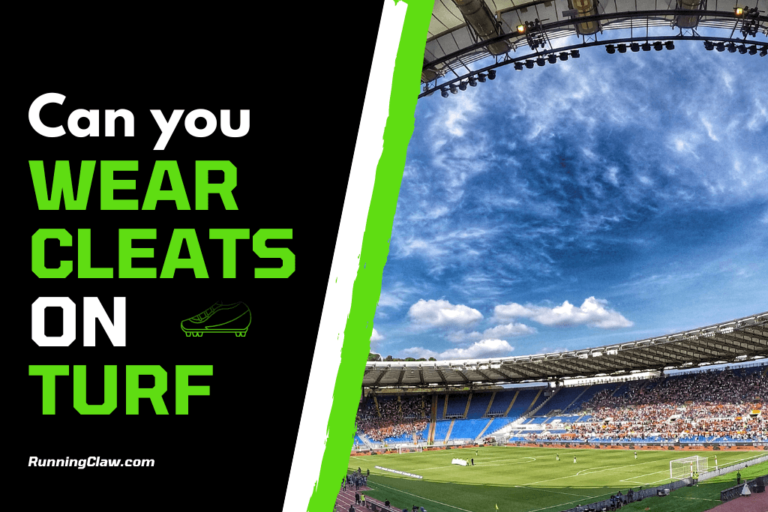A common debate in sports is the need for turf cleats. If you play soccer, football, or baseball, you have likely, at some point, had to decide why cleats are required for turf.
A straightforward answer to the question is yes. You require cleats to play turf. There are various kinds of artificial turf fields, and, as such, multiple aspects must be considered when selecting the right turf cleats.
In artificial turf, athletes are permitted to wear cleats made of a hard surface because they don’t cause harm to the turf surface. They also provide an excellent grip on artificial turf.
But most people believe they’re not the best option because the sole can’t get into the turf properly. Instead, smaller studs that are round are ideal in artificial turf.
Kinds of Cleats

Detachable cleats: Detachable cleats are usually made in a conventional seven-stud pattern. The studs themselves can be removed and exchanged for different lengths of studs. The advantage of swapping studs is that shorter ones can be used with the ideal grass conditions, while longer studs are suitable for longer grass length or muddy needs.
Since grass is soft, you require fewer studs that enhance the pressure on each stud (PPS) to penetrate the ground and provide grip. There isn’t any adverse effect on knees as the surface can be soft enough to take the weight of your body onto the surface.
Form-fitted Cleats: The molded cleats generally have 12 studs on the bottom. Molded cleats work best on field turf with the same characteristics as dry grass, short and short, regardless of whether the turf is dry or wet. More studs are needed to lower the PPS and minimize the impact on your knees, as the turf isn’t as soft as long grass.
Read | What is a Cleat in Shoes?
An Issue with Cleats for Turf

First, let’s talk about the good news. A lot of artificial grass fields are perfect for the use of traditional hard-surface cleats. Furthermore, having players use them will not immediately harm the integrity of the surface.
- It means that you don’t need to be concerned about your cleats that cause problems that cause regular repairs and can cost you more over the long term.
- The only place cleats could pose problems is in the game themselves.
- No natural soil cleats might not provide the best performance as they’re not penetrating the surface to achieve the grip you want.
- However, the answer to whether you can wear cleats when playing on artificial turf is an exception.
- The advantages of playing on artificial turf are still, but the cleats will function differently.
- It could lead to injuries, so you’re better off ditching the cleats made for hard surfaces in favor of something explicitly designed for play on artificial turf.
How to Choose a Pair of Turf Cleats?

Are you frustrated that shoes for indoor use are not suitable for use on turf? It is always challenging to find another pair of shoes. However, the good news is there are numerous turf shoes available that are affordable. Shop around, and keeping some of these suggestions in mind will guarantee you purchase the right pair. We have our latest turf cleats suggestions in this article.
Comfort
It is true for all shoes, but comfort is essential. If the footwear isn’t made for playing on grass, they will likely be uncomfortable in regular use too. The reason is that a person constantly moves, which could result in excessive pressure on the feet.
Materials
Turf shoes are constructed from the same materials as the standard cleats because players must contend with the same conditions. The only way the material could be less significant is when the turf is primarily indoors. If that’s the situation, one can skip sliding and sliding around as often.
Traction
The level of traction a player gets from their turf shoes must be considered. Most cleats can do an excellent job at this, while others could be more hit-and-miss. Many companies ensure they are as minimal as they can with their turf shoes. However, having the proper grip to ease cutting and running throughout the game is still essential.
Durability
Turf is soft on cleats, so it’s not difficult to deal with. They will not be as brittle as other surfaces. It is a good thing in general. Also, it won’t get much more soiled from grass or mud stains as the surface is synthetic.
Some believe the grass can be rough in certain circumstances since the shoe may rub incorrectly in one aspect. Keep an eye on any spots that show signs of wear.
Color Options
It could seem small compared to the rest of the world; however, the color of your shirt can impact many people. They’d like to ensure that they have an appearance that can be in line with their team or stands out from the crowd overall.
There’s nothing wrong with picking two shoes based on how they appear. It may seem unwise to certain people. However, others believe they’re more effective when they feel more comfortable in their appearance.
Frequently Ask Questions
Can You Wear Cleats On Indoor Turf?
It’s not recommended to play on turf using indoor soccer cleats as they do not provide the required grip for the surface. If you choose to do this, you’ll likely be disadvantaged compared to players wearing the proper shoes. The indoor soccer shoes are designed for indoor dry hardwood surfaces.
Can You Wear Cleats On Artificial Turf?
The traditional pair of stern surface cleats are suitable for most artificial turf fields; however, buying a pair of synthetic field cleats is an excellent idea for those who often play on artificial turf.
Can You Wear Cleats On Baseball Turf?
The conventional pair of stern surface cleats are suitable to wear on most Baseball turf fields; however, getting a pair of synthetic field cleats can be a good idea for people who frequently play on Baseball turf.
Can You Wear Cleats On Turf Softball?
They are a fantastic alternative for players of all ages since they can be worn on any surface without wearing down. They’re also typically less heavy than other choices. They’re ideal for natural grass but can also be used for Softball grass fields.
Can You Wear Cleats On Football Turf?
Traditional hard-surface cleats are suitable for most Football turf fields, but purchasing a pair of synthetic field cleats is an excellent option if you’re planning to play on Football turf frequently.
Can You Wear Cleats On Soccer Turf?
On most fields with soccer turf, the traditional pair of stern surface cleats may be worn, but if you plan to play on soccer turf frequently, investing in a pair of synthetic field cleats is a great decision.
Are The Benefits Of Turf Cleats Worth It?

It’s not the issue of whether or not the cleats for turf baseball are superior or inferior to traditional cleats; instead, what’s best in different situations. It’s all about the surface you’re playing on and the type of surface that will give you the most edge on your field. If most of your games are played on turf, it’s a must to have since they’ll give you the traction you require to be at your best!
Conclusion
Cleats are a great option on grasses. It is crucial to consider the kind of field on which the cleats are used. The surface type determines the cleats that could be utilized. So, care must be taken when deciding whether to utilize cleats (firm ground cleats or soft ground).
You may also like:
- Can You Use Football Cleats For Softball
- Solution for Stinky Soccer Cleats
- Difference Between Soccer and Football Cleats
- How to Make Cleats Smell Better?
- Are Firm Ground Cleats Good For Turf?
- Are soccer Cleats the same as Softball cleats?
- Where to Buy Soccer Cleats Online?
- Are Black Soccer Cleats Hotter?
- How to Make Cleats Smell Better?
- Do Professional Soccer Players get Free Cleats?
- Do Puma Soccer Cleats Have A Warranty?
- What is The Difference Between Shoes and Cleats?


